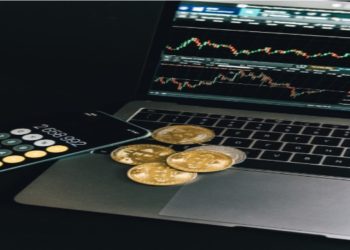In the fast-paced, ever-shifting universe of cryptocurrencies, Dogecoin stands out as nothing short of remarkable. Truly, who could have predicted that a coin born from a meme would soar beyond anyone’s expectations? What started in 2013 as a lighthearted joke, inspired by the viral “Doge” meme, has exploded in popularity, with nearly 6 million wallets now holding it. Did you catch that? Six million. Not a typo. What began as a satirical poke at Bitcoin and the lofty promises of early cryptocurrencies has evolved into a legitimate player in the financial world, currently ranking as the seventh-largest cryptocurrency with a market value of around $8 billion. And let’s talk about its creators, Billy Markus and Jackson Palmer. They didn’t set out to revolutionize finance; they were having fun, remember? Yet their vision was quietly genius: make crypto accessible, friendly, and appealing to everyone, not just the tech-savvy or financial elites. And guess what happened? It worked. Celebrities, casual investors, skeptics, and people who found Bitcoin intimidating flocked to Dogecoin. Its charm wasn’t in complex whitepapers or banking jargon but in memes, community, and pure goodwill.
So, while Markus and Palmer weren’t scheming to disrupt Wall Street, Dogecoin carved a niche uniquely its own. A coin that, in many ways, democratized cryptocurrency far more effectively than any “serious” blockchain project could. That is the reason why everyone is discussing Dogecoin price. Now it makes total sense. Anyways, the dynamic is way more complex, and it needs thorough evaluation, so let’s begin.
Unlike Bitcoin, Dogecoin Is Damn Fun
While Bitcoin set out to be digital gold, wrapped in layers of technical complexity that most people wouldn’t dare touch, Dogecoin had a radically different mission: fun.Once again, its charm wasn’t in convoluted algorithms or terms people couldn’t even pronounce but in memes, laughter, and accessibility. Now, don’t get us wrong, Dogecoin is still powered by serious technology. Every cryptocurrency relies on blockchain, an intricate system that guarantees security, decentralization, and transparency. But Dogecoin? It chose a different route entirely. Its rise wasn’t fueled by dense white papers or academic debates; it rode the tidal wave of internet humor, Reddit threads, and influencer tweets.
However,what Dogecoin essentially said to the world is that crypto shouldn’t be intimidating.This playful, approachable identity opened doors for people to engage, experiment, and enjoy technology without feeling pressured to master every detail. In doing so, Dogecoin proved a striking truth about innovation. It doesn’t always have to be formal. Sometimes, all it takes is a dog costume. Seriously, how often do you see that level of brilliance disguised as pure fun? Allow us to answer, never, almost.
Technology At Its Peak Within The Dogecoin System
Dogecoin may have started out as “the fun coin,” but don’t mistake simplicity for stagnation. Under the hood, its infrastructure has quietly evolved to keep pace with growing demand. Take AuxPoW, Auxiliary Proof of Work, as an example. This mechanism enables Dogecoin to leverage the hashing power of a larger blockchain, specifically Litecoin, thereby providing it with significantly greater network security than it could sustain on its own. Basically, instead of fading into obscurity after its early days of dwindling developer activity, Dogecoin leveraged Litecoin’s robust mining ecosystem, ensuring its long-term viability. Add to that a steady stream of upgrades, faster node synchronization, improved wallet performance, and recalibrated default transaction fees, and suddenly this “meme coin” starts looking like a project with serious technical resilience.
But technology alone doesn’t build legitimacy, it is the real-world adoption which does it. And Dogecoin has scored big here. Tesla made headlines when it began accepting DOGE for select merchandise. SpaceX doubled down on its ambitious “Doge-1” satellite mission, which is funded entirely in DOGE. Meanwhile, integration across major platforms, such as Coinbase, Robinhood, and BitPay, cemented Dogecoin’s place in the mainstream cryptocurrency economy. And let’s not forget the Dogecoin-Ethereum bridge currently in development. If completed, it would let users wrap DOGE as an ERC-20 token, opening the door to decentralized finance (DeFi), smart contracts, and the broader Web3 ecosystem. In other words, Dogecoin wouldn’t just be a quirky payment coin anymore, it could become a versatile asset competing on the same playing field as the most serious blockchain projects out there.
The Journey From Musk To Mainstream Appeal
Elon Musk has been, without a doubt, one of the primary reasons Dogecoin escaped meme status and landed at the center of financial conversation. The real turning point? April 1, 2021. Musk tweeted that SpaceX is about to put Dogecoin on the moon. The timing, April Fool’s Day, was no accident. It was playful, sure, but was it also calculated? Hard to say. Maybe both. What happened next wasn’t a joke at all. The markets reacted instantly. Dogecoin’s price shot up, social feeds exploded, and suddenly, financial media outlets were treating it like serious news. For context: a single tweet from Musk, one of the world’s most influential entrepreneurs, turned a meme coin into a mainstream financial story overnight. That’s not normal market behavior, in case you were wondering. That’s cultural momentum colliding with market psychology.
And that’s the real point here. It wasn’t just about a short-term price bump. Musk’s association gave Dogecoin something more valuable: credibility in the eyes of investors who had ignored it before. It went from Reddit threads to being debated on CNBC, Bloomberg, and trading floors. In other words, a joke tweet ended up rewriting the narrative, Dogecoin wasn’t just an internet fad anymore, it was a market mover.
Concluding Remarks
Overall, Dogecoin demonstrates that cryptocurrency doesn’t need to be intimidating to have an impact. It has bridged the gap between tech-savvy investors and casual participants, proving that a coin with community-driven appeal, strong technical underpinnings, and high-profile adoption can be both fun and financially meaningful. Whether its future lies in broader DeFi integration, continued mainstream partnerships, or new speculative waves, Dogecoin has already reshaped how we think about the intersection of culture, technology, and finance. For now, that is more than enough.













































































